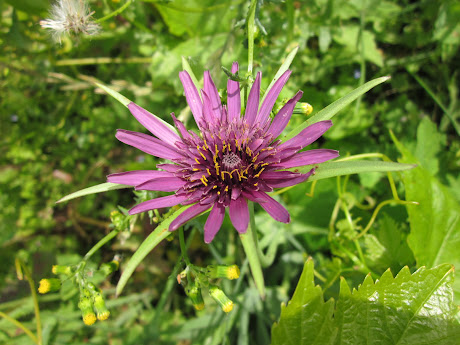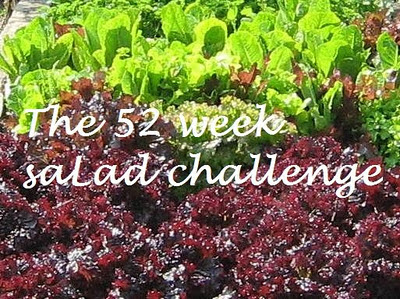Book Review: The Wild Things
Last Monday saw the start of a new plant-related series on Channel 4 called Wild Things. I haven't yet caught up with my recording of it, but in the meantime I've been thoroughly enjoying the accompanying book tie-in :)
The programme and book are looking at the changes found between 2 major botanical surveys of the British Isles conducted in 1962 and 2002 respectively. The 1962 survey resulted in the first ever Atlas of the British Flora, a collection of plant distribution maps which meticulously documented over 7,000 plant species and where they were found. As a result of these maps, a modern version of the research discipline biogeography was born.
The second survey, using the same methodology* has enabled botanists to see how our plant populations have changed in the last 40-50 years. Naturally, there are winners and losers and its the colourful stories about some of these which Wild Things brings to life.
For instance, many of us are aware of the threat to our native bluebell by its ability to hybridise with its non-native Spanish cousin. Looking at the 1962 and 2002 distribution maps, initially all looks well for our native species, as its presence is still strong. But then comparison with the changes in the Spanish bluebell population in the past 50 years and the threat becomes clearer. The maps can't say how the population levels within the distribution have changed, but it allows scientists to focus on that question going forward.
I was fascinated to read how the salt laden gritting of our road network in winter has enabled Danish scurvygrass to spread far away from its usual coastal habitat to many points inland. Our railway network and thousands of tiny seeds per plant has enabled Oxford ragwort to widen its distribution in a similar fashion. There are escapees from our gardens like the rhododendron; changes in farming practises affecting the poppy; threatened habitats like chalk grasslands which affects whole plant communities; and many other factors to consider.
It's a great read which adds real insight into our changing British flora. At the back of the book is a list of ways you can get involved with current and future work of this nature through The Botanical Society of the British Isles (BSBI), Plantlife, The British Lichen Society and The British Bryological Society (BBS). To those organisations I'd add your local Wildlife Trust, which often has projects at the more local level, that are no less important. Also, OPAL have a simple survey that you might like to join, which uses various lichen species as a major indicator of air quality.
I believe it's books/programmes like this one which illustrate the continuing need for the botany degree at our universities. With it no longer on offer in the UK, where will the botanists come from to re-survey and interpret the data in 10, 20, 50 years time?
* = The entire country is divided into 10 kilometre squares which are then surveyed and the species found in every one of them recorded - imagine the amount of work involved!
NB The second programme in the TV series is on tomorrow night at 8.30 pm on Channel 4.
Disclosure: I received a review copy for honest review purposes.











It seems we both have issues with our natives and trying to preserve them and deal with invasives...it is a hard fight but one I think is so important...if we ever get this series over here to view I will enjoy watching it!
ReplyDeleteThat sounds like a great programme. I'll have to catch it on 4OD and record it tomorrow night.
ReplyDeleteHappy Sunday,
Sarabeth
Life of an Agnostic Sunday School Teacher
Sounds like a terrific book, VP. I didn't know about your native bluebell being threatened by the Spanish bluebell. I learn something new every day. :)
ReplyDeleteSeems like a great book & series!
ReplyDeleteWhat, no botany degrees at all? Anywhere in the UK? (rude words). I have inherited Spanish bluebells in my new garden, and am resigned to dead heading before they set seed, but the news that the local Cemaes in Bloom group have just planted hundreds of native bluebells in a woodland area near our house makes me wonder if I should just try and get rid of them. Though, like the crocosmia I have so much of, it is virtually impossible to get rid of it all together.
ReplyDeleteSounds like a great book, and will have to try and catch up with the series.
Donna - we do. Our definition of native is different to the USA's. Ours goes back 10,000 years to the last ice age!
ReplyDeleteSarabeth - welcome :) I've heard mixed reports on the programme, but the subject matter is fascinating. Have a look and tell me what you think!
Jodi - 'tis fab - I learnt loads of new things :)
petoskystone - it is!
Janet - no, not one! It's all been wrapped up within 'plant sciences' which means a lot of the taxonomy side of things won't be taught, which is what's needed for this kind of work. I have Spanish bluebells too - I've found that stamping severely on the leaves when they come up is a pretty good way of getting rid of them, especially if you can't dig them up because of other stuff in the way.